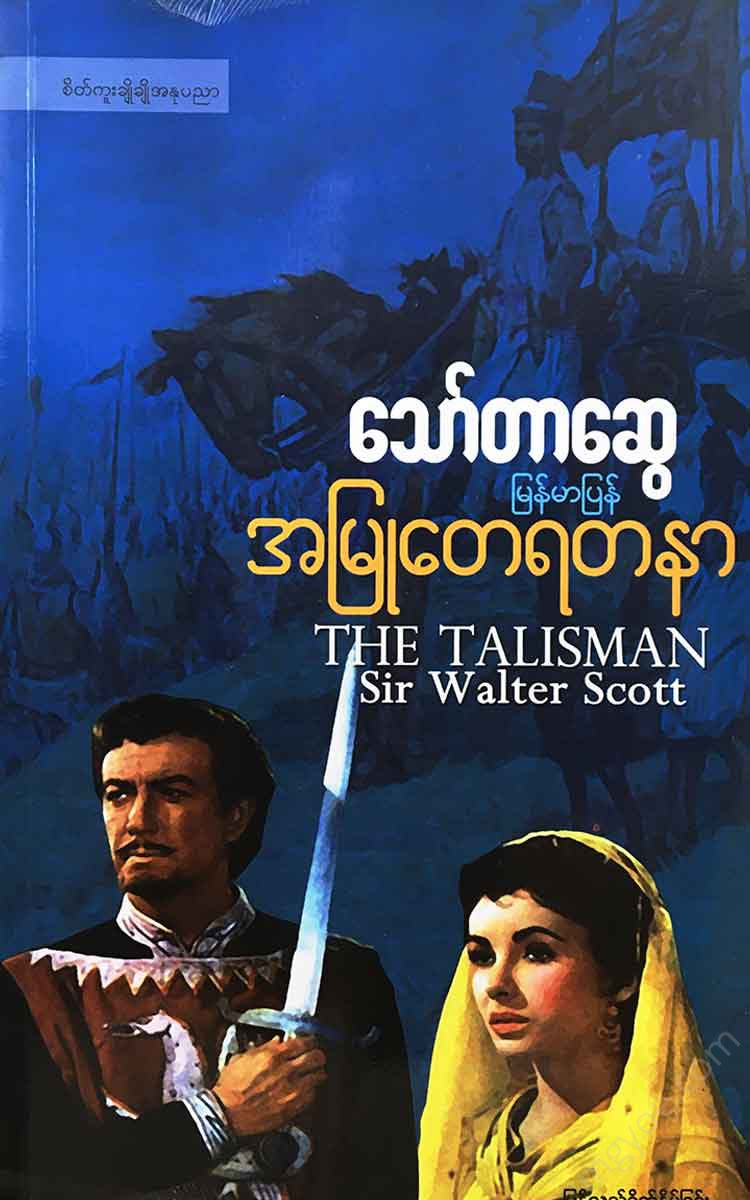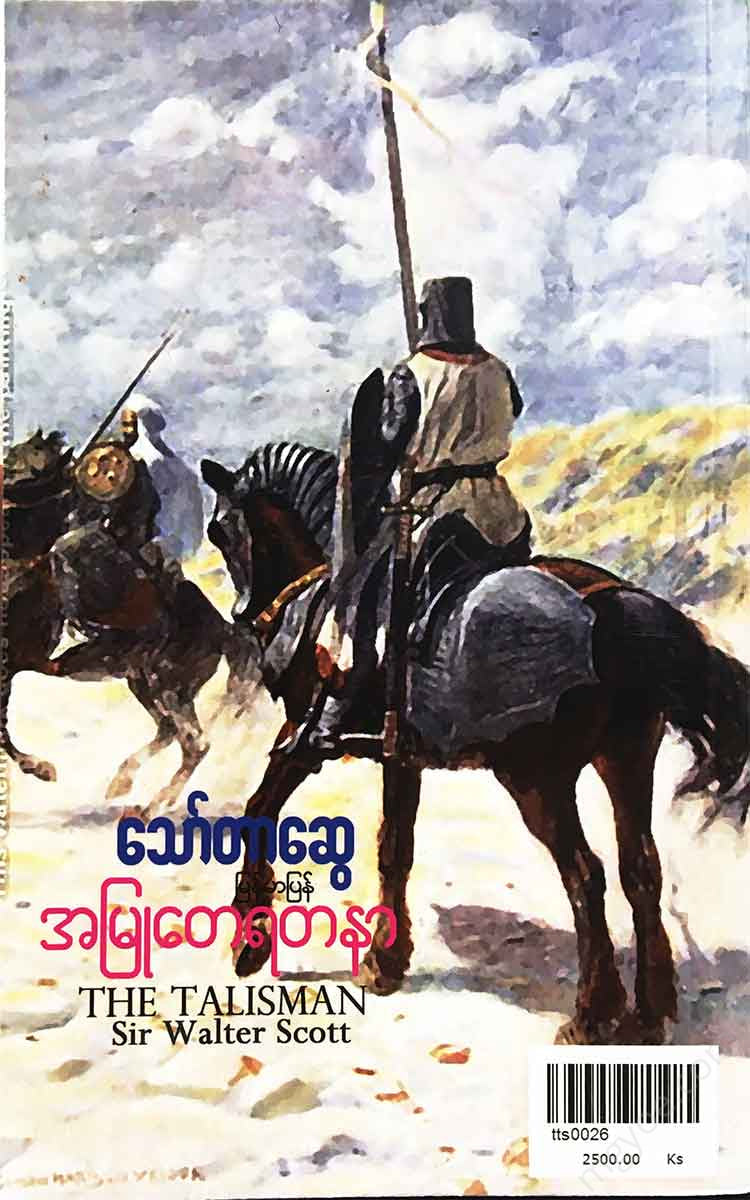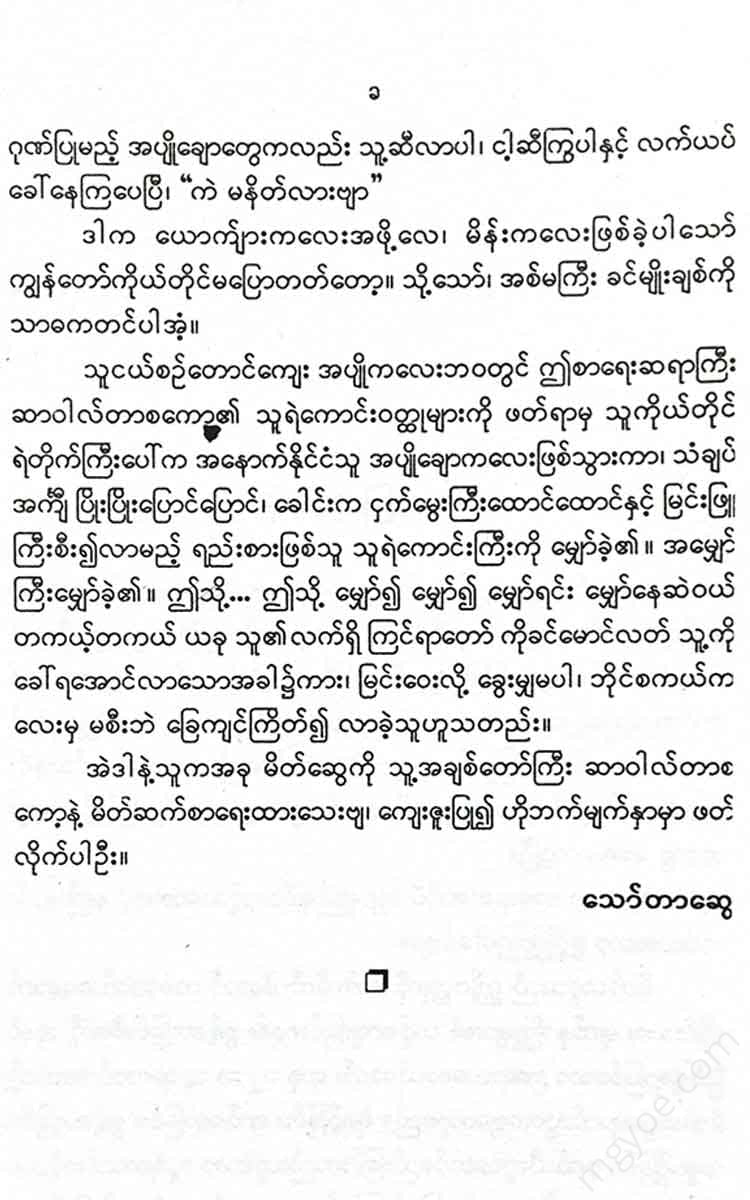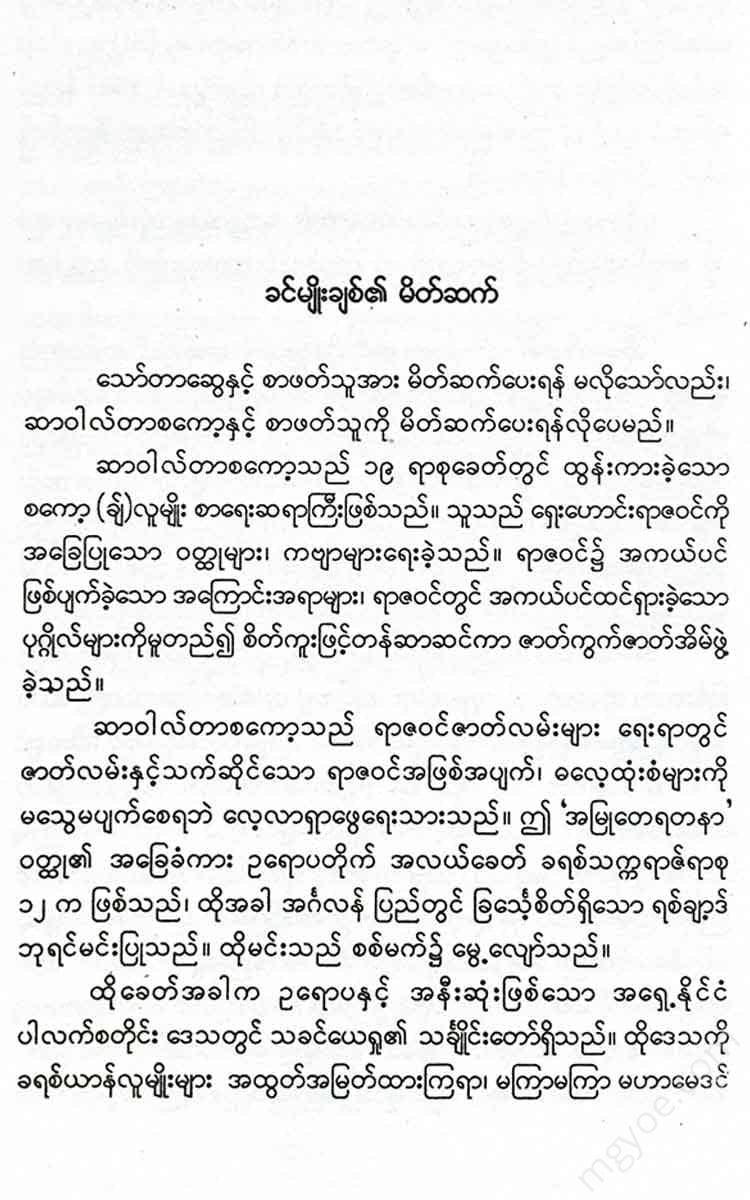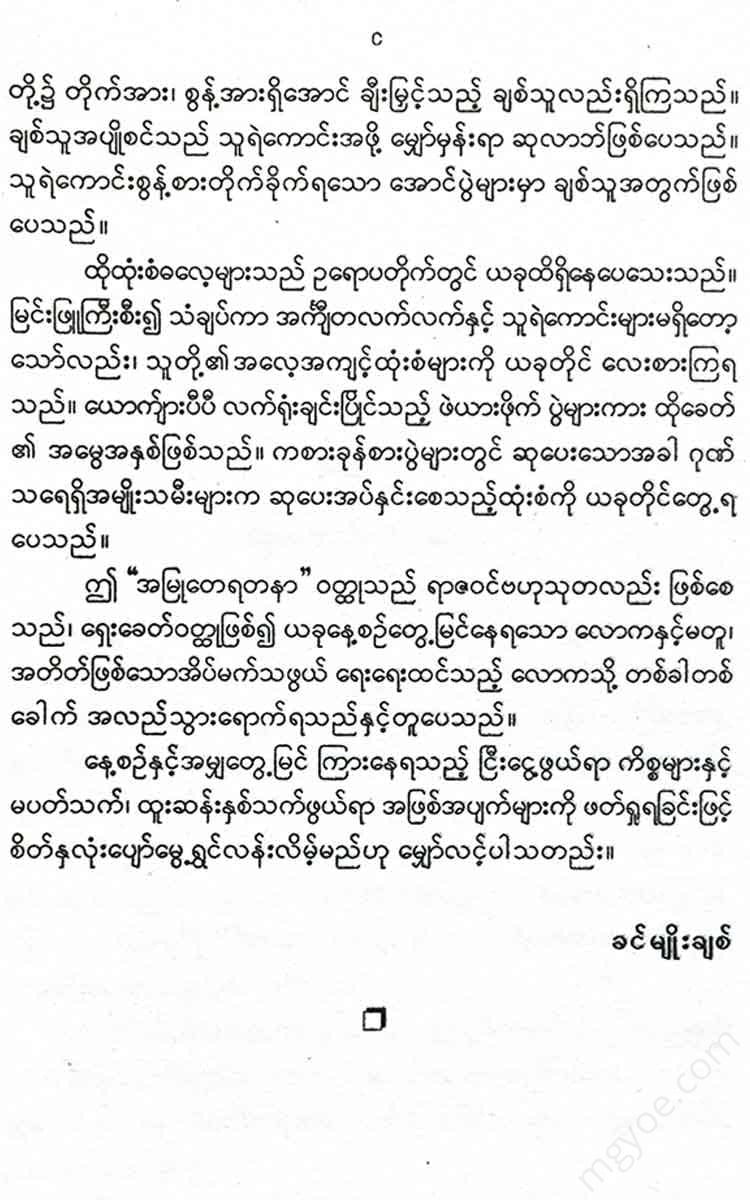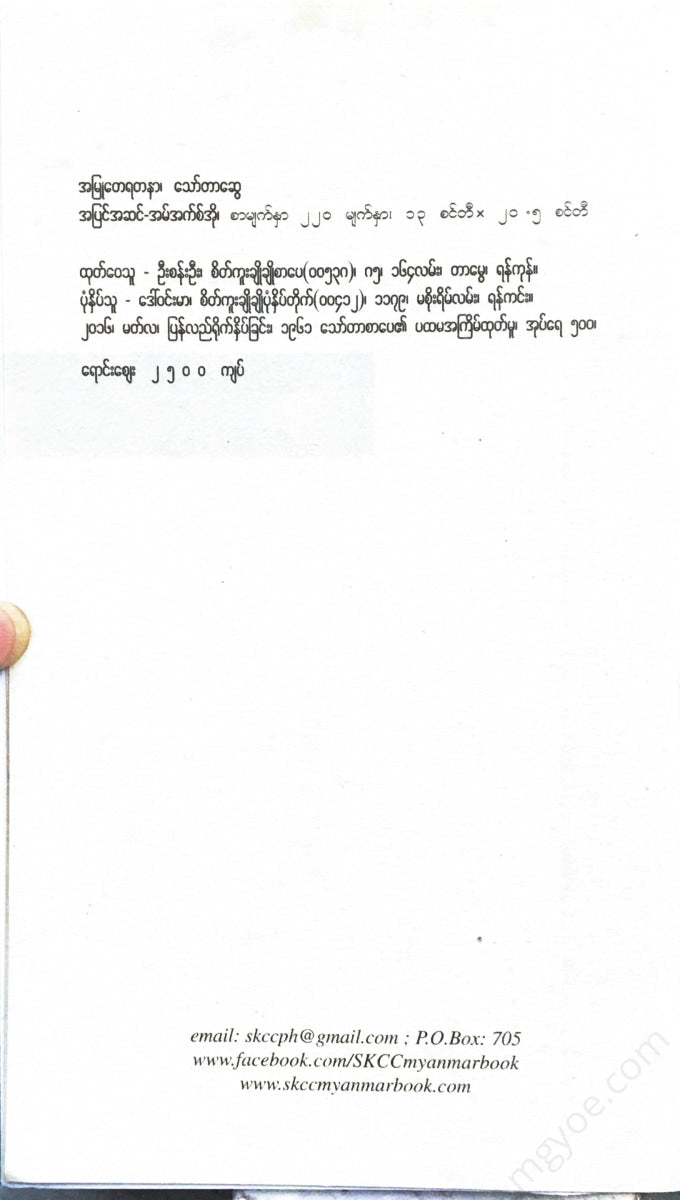စိတ်ကူးချိုချိုစာပေ
Thawtar Swe - Auteyadana
Thawtar Swe - Auteyadana
Couldn't load pickup availability
In one of the hottest regions on earth, in Syria, at almost noon, a horseman with a red cross on his chest was riding steadily through a desert not far from the Dead Sea.
He was a Christian warrior who had left his homeland in the north to join the great religious war called the Crusades between Christians and Muslims in Palestine.
In a few minutes this hero will face an amazing horse-to-horse battle, but now we need to know the armor and weapons of him and his horse.
Indeed, the armor worn by this knight and his horse was not at all suitable for traveling in such a hot region at such a time of the year, because the iron armor worn by the knights of Europe at that time was very heavy and thick.
The whole body of the hero is dressed in a suit of pants and a long-sleeved shirt made of steel wire, with steel gauntlets on his hands and steel boots on his feet, so that no part of his body is exposed. On the chest, a “breastplate” made of steel plates connected like fish scales is placed over this steel wire jacket. On the head, a “helmet” with a small hole for the eyes and a small window is placed over it. On top of that, there is a small “hood” on top of it. There is no gap between the body and the head. Not only is there a steel wire loop around the neck, but a steel collar connected to the steel collar also protects the shoulders on both sides.
In addition to all this, one can still see the “sakkot” (a large, embroidered, and embroidered garment), which, although it is very old and worn, is still visible, with its sleeping leopards, the emblem of the wearer, and the inscription “I am sleeping, do not wake me,” which seems to indicate the warrior’s state of mind. The leopards and the leopards are still visible, each one slightly different from the other. This garment, which at first glance seems to make the wearer feel hotter, is actually very useful to the warrior. For if the sun were not there, the heat of the sun would fall directly on the armor worn inside, and the warrior would be exposed to unbearable heat.
A large, thick, triangular shield was still hanging from the warrior's neck. The shield was already worn and dented by the many cuts and scratches of battle, but the image of a sleeping leopard and the words "Do not wake me while I am sleeping" were still clearly visible on the battlefield, making the warrior clearly recognizable as the "Sleeping Leopard-Hero."
These are the protections that the warrior has against the weather and the enemy's attacks. The weapons he uses to fight the enemy are (1) a long, strong, steel-tipped spear. This is the bone that he holds in his right foot while riding.
A pair of small flowers, leaning against the side of his head and slightly protruding from behind, were playing in the air. (2) A long, sharp sword with a cross-shaped bone and two teeth, hung on his left arm; (3) A large, sharp dagger on his right waist; (4) A “mas” or a double-edged steel sword, which was hung from the saddle of his horse, and was used for both shooting and slashing.
This is the complete outfit of an ancient warrior. Then look again at the horse he rides. It is no less heavy than the equipment of its master, made of steel plates and carp scales.
The horse's body was covered with a large iron plate, which protected the horse's belly, sides, hips, and front chest, and was connected to a similar iron plate covering the front chest. The head was covered with an iron plate-horse mask with holes for ears, eyes, nose, mouth, and nostrils, and a large iron spike resembling a rhinoceros horn was placed in the middle of the forehead.
In fact, the appearance of the knight and his horse was not like two flesh-and-blood bodies joined together, but rather like a large statue of the rider cast from molten iron.
However, as nature dictates to all living creatures the need for food and rest, this leopard warrior could not defy nature's will, and at noon he was led by his horse to a small "oasis" of palm trees, which had been arranged for him to arrive. This place was not far from the Dead Sea. It was the most suitable midday stop for him on the way.
However, he was not able to find an easy rest and suddenly had to fight a very important battle.
For when he looked closely at the small group of palm trees, he saw something moving among the branches, and within a few seconds, it had separated from the trees and was a Mahamedan horseman, known as a "Sarsen," with a long white head, a green cloak, and a long staff.
Sarsen, the most famous Arab horseman in the world, rode his horse without reins, but with his body, wielding a rhinoceros shield with his left hand and with his right hand, skillfully swinging his long spear over his head like a fan, as he galloped towards the Christian hero. He guessed that his enemy had also come running like him, expecting a fierce confrontation between the two.
But the Christian knight, who was already well-versed in the fighting methods of the Saracens, as if he did not want to cause unnecessary fatigue to his horse, stood firm and upright, not moving a single step from his place, and only when his enemy came near did he pretend to use his great spear with the combined power of his horse and his own.
Therefore, Sarsen, having lost his aim, as soon as he reached within two spear-lengths of the enemy, did not advance, but turned to the left and rode in a circle around the enemy, looking for a place to strike.
Meanwhile the Christian knight did not move from his place, but turned his horse round and round, and was always facing the enemy, so that the Saracen could not see a good point, and after two turns he rode in the other direction. Then, when he had gone about a hundred yards, he turned back and galloped again at a furious gallop.
But the Christian knight, as before, remained motionless, and when he came near, the Saracen had to circle around again, as before. This time, the Christian turned his back on the original position and faced the Saracen again, and the Saracen had to run away a second time.
Thus the Saracen ran towards the Christian, circled around, and ran away three times. On the third run, the Christian knight removed the "mas" from the saddle and, with a perfect stroke, threw him off.
Sarsen, knowing this, protected his back with a small rhinoceros shield, so his head was not split in two. However, the man was thrown off his horse.
But before the Christian knight had time to attack him, the Sarsen sprang up from the ground and, without even setting foot on his horse, mounted it, without a single step, while the Christian knight, who had been calm even in the midst of the battle, was already retrieving the spear he had thrown.
As soon as the Sarsenian returned to his horse, he rode quickly to a place beyond the reach of the enemy's weapons, and, deciding not to engage them at close range, he threw his spear to the ground, prepared the bow and arrows he had on his back, and returned to the Christians.
This time, without coming as close to the enemy as at first, he rode twice as far as he had before, circling the enemy, and with his inimitable horsemanship, he fired arrows one after another from a position that seemed to him to be incomparable. None of his arrows missed, and it was only because of the good armor of the Christian knight that they did not pierce.
But the seventh arrow seemed to have struck a gap in the armor. The Christian fell heavily from his horse to the ground. But to the great surprise of the Sarsen, he came to inspect the fallen enemy, who had been struck by the arrow.
Suddenly, he himself found himself in the hands of the enemy. This happened because the Christian, who wanted to fight at close range, had devised a trick to get close to his enemy.
